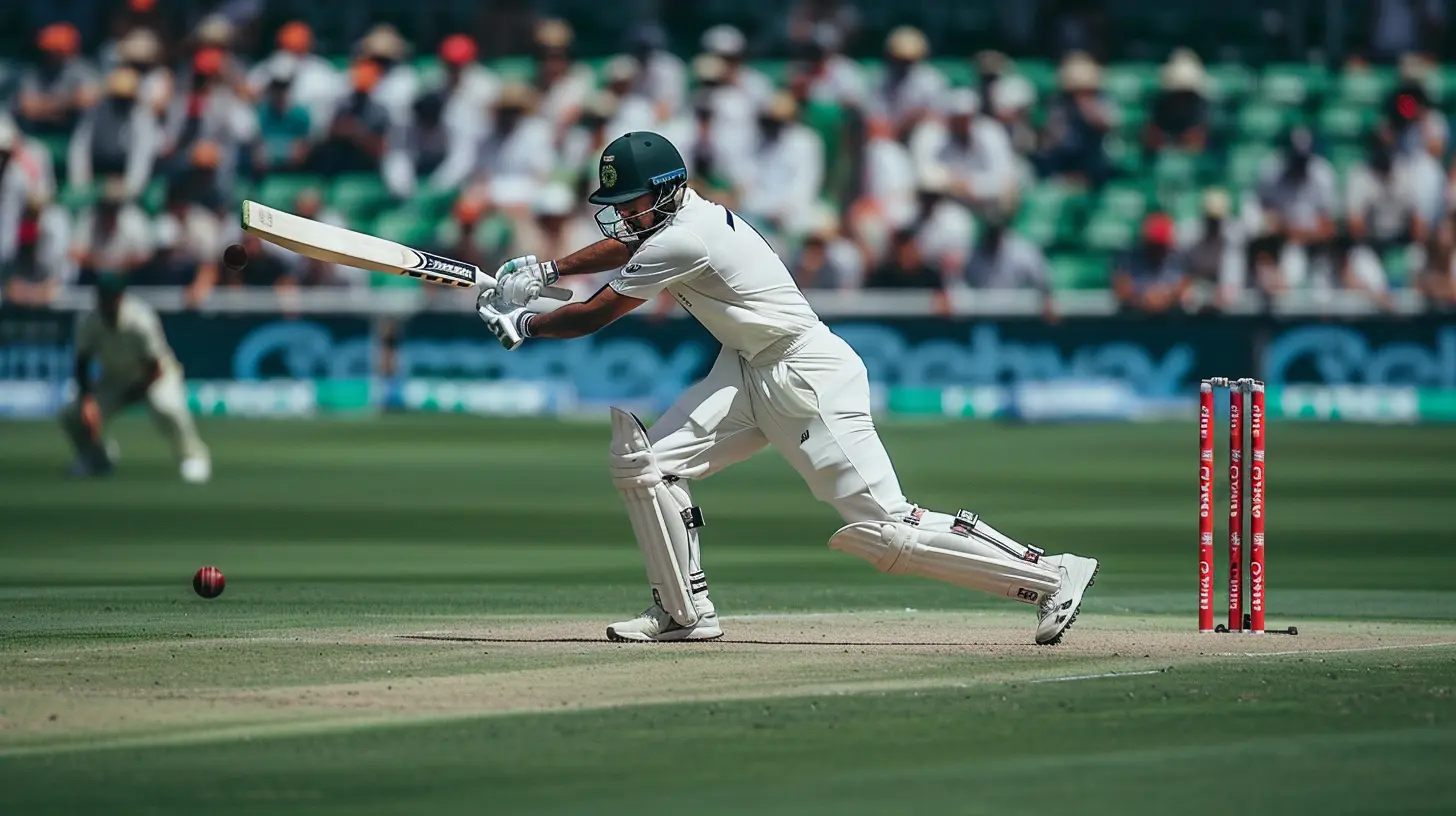Cricket and Analytics: How Data is Shaping Modern Tactics
26 October 2025
Cricket has come a long way since players in flannel trousers casually strolled onto the field with little more than gut instinct guiding their gameplay. Today, if you’re not talking data in cricket, you’re already behind. Just like Silicon Valley startups use data to predict trends, modern cricket teams use analytics to make smarter decisions—on and off the pitch.
In this piece, we're diving headfirst into how analytics is transforming cricket into a game of numbers just as much as it is one of skill and flair. Buckle up because it’s not just about batting averages anymore.
The Traditional Game Meets Modern Tech
For decades, cricket was ruled by instinct, experience, and a little superstition (looking at you, lucky socks and rituals). Captains made decisions based on a "feel" for the game, sometimes with incredible results, but other times, not so much.Now? Enter laptops, smartwatches, drones, and even AI-driven databases. Cricket isn’t just leather on willow anymore—it’s a chess match powered by algorithms.
What Is Cricket Analytics, Anyway?
At its core, cricket analytics is all about collecting, crunching, and interpreting data. That can range from how a batsman performs against left-arm orthodox spin at dusk to how often a bowler hits a good length in the powerplay.Think of it like Netflix’s recommendation engine. Just as it suggests shows based on what you love, cricket analytics suggests tactics based on player tendencies, conditions, and past performances.
Data’s Impact on Batting Strategies
Let’s start with the glam side—batting.Custom Matchups
Do you remember when teams would just send their strongest batsman at No. 3, no questions asked? Not anymore. Coaches now look at individual matchups to the microscopic level. If a batsman struggles against off-spin, you bet they’re not facing it early on.Teams also adjust their lineups dynamically. If the data shows a particular bowler has dismissed a top batter three times in five innings, that batter might be protected or even shuffled down the order.
Shot Selection and Risk Management
Data analysts break down where a batter scores most of their runs and which strokes lead to their dismissals. So, if a player tends to get out pulling to deep square leg, guess what they're coached to avoid?It’s almost like a GPS telling you the fastest route. Sure, you can take the scenic way, but is it worth the traffic?
Bowling Tactics? All About the Margins
Bowling has arguably benefited more than batting from analytics. These days, plans are crafted to squeeze out every ounce of advantage.Bowling Plans by Phases
Modern bowling is split into segments—powerplay, middle overs, and death overs—and each phase is dissected intensely with data.Take the field restrictions in the powerplay. Teams aim to bowl tight lines and lengths that restrict scoring shots. If data shows a batter is weak against deliveries that pitch on off-stump swinging away, that's the go-to move.
Heat Maps and Pitch Maps
Ever seen those colorful heat maps on TV? That’s analytics in action. They show where a bowler has delivered the ball the most and where batters have scored.Coaches and analysts use it to tweak lengths and lines, even suggesting subtle variations to keep the batsman guessing.
The Rise of “Match-Up Science”
One term you’ll hear a lot in commentary today is "match-ups." This isn't just buzzword fluff—it’s serious business.Tailoring Bowlers to Batters
Say a team knows that their leg-spinner has historically dismissed an opposing batter three times in four innings. You can bet your bottom dollar that leggie will get the ball the moment that batter walks in.It’s all about leveraging the smallest percentage gains. Cricket has evolved into a margin game, and match-up science is the secret weapon.
How Field Placements Have Gone High-Tech
Remember the days when captains would just yell, "Come a bit finer!"? These days, field placements are plotted out on software, accounting for every nuance.Data-Driven Positions
If data shows a player scores 60% of their runs through the off-side, you'll see a packed off-side field. If a batter loves to loft straight drives, expect a long-off and long-on in place, even in unconventional scenarios.Real-Time Adjustments
Thanks to wearable tech and communication devices, fielders are sometimes moved based on real-time data. Coaches up in the box suggest tweaks if they spot patterns during the game.It’s like your GPS rerouting while you’re still driving.
The Analyst Behind the Curtain
Coaches are still crucial, but now they share the stage with data analysts—those behind-the-scenes wizards crunching numbers with the power of software and machine learning tools.Role of the Analyst
They’re not just watching the game—they’re coding every ball, logging it, comparing it, and running predictive models. It’s their insights that help teams win matches by anticipating trends before they even happen.In a way, they’re the team’s secret weapon—less visible than the star players but just as important.
The Franchise Revolution and Analytics Boom
You can thank T20 leagues like the IPL, Big Bash, and The Hundred for setting the analytics ball rolling.Short Formats, Big Data
T20 cricket, with its tight margins and explosive gameplay, demands precision. That’s where data shines brightest.Franchises invest heavily in analytical tools. Some even hire data scientists with zero cricketing background but strong statistical skills. Why? Because pure logic often pierces through emotion and gut feeling.
Player Fitness and Wearable Tech
Analytics isn’t just about strategy—it’s shaping how players train too.Monitoring Workloads
With GPS trackers and heart-rate monitors, teams track every sprint, dive, and over bowled. They know exactly when a player is fatigued and at risk of injury.Balancing player workload has become a science in itself. Rest days are no longer just about intuition—they’re backed by hard numbers.
Fantasy Cricket and Fan Engagement
Bet you didn’t think you’d make it into this conversation, huh? But yes, fans are unwitting beneficiaries of this data revolution.Stats for the Masses
Fantasy players now have access to data sets that were once top-secret. Players’ strike rates against certain oppositions, bowler economy at death, you name it—it’s out there.And it’s not just helping you build your fantasy XI; it’s changing how fans watch the game.
Limitations and the Human Element
Now, let’s keep it real for a second. Cricket may be a data-rich sport, but numbers can’t capture everything.Intuition Still Matters
You can’t program grit. You can’t quantify pressure in a final over. Data can suggest, but it can’t feel. Sometimes, a gut call trumps analytics, and when it works, it’s pure magic.Overreliance on Data?
There’s also the danger of becoming too analytics-obsessed. The human brain is complex; reducing it to patterns can sometimes backfire.The best teams strike a balance—using data to empower human decisions, not replace them.
What’s Next for Cricket Analytics?
AI and Predictive Modeling
Artificial Intelligence is stepping in to write the next chapter. From predicting the outcome of games to offering real-time tactical suggestions, AI could soon become the team’s smartest assistant.Augmented Reality Coaching
Imagine donning AR glasses to face a virtual Bumrah or Rashid Khan in the nets. That’s not sci-fi—it’s very much in the pipeline.Final Thoughts—Data is the New All-Rounder
Cricket has always been a thinking person’s game. Tactics, patience, and execution have long been its pillars. Now, data is the glue bringing those elements together in a precise, measurable way.But here’s the fun part: the soul of the sport hasn’t changed. Whether it’s a perfectly timed cover drive or a spinning delivery that bamboozles the batter, there's still a touch of magic. Analytics just helps us understand that magic—and maybe, just maybe, recreate it more often.
So, the next time you hear, “It’s just a game,” remember—it’s also a game of numbers doing a waltz with skill and instinct. And that’s what makes modern cricket so darn fascinating.
all images in this post were generated using AI tools
Category:
CricketAuthor:

Preston Wilkins
Discussion
rate this article
1 comments
Orionyx Kline
Great article! It's fascinating to see how analytics are revolutionizing cricket strategies. The blend of data and traditional skills is creating a new era in the sport. Can't wait to see how teams adapt these insights in upcoming matches. Keep up the excellent work!
October 30, 2025 at 12:18 PM

Preston Wilkins
Thank you for your kind words! I'm glad you enjoyed the article. It's an exciting time for cricket as analytics continue to evolve strategies. Stay tuned for more developments!


